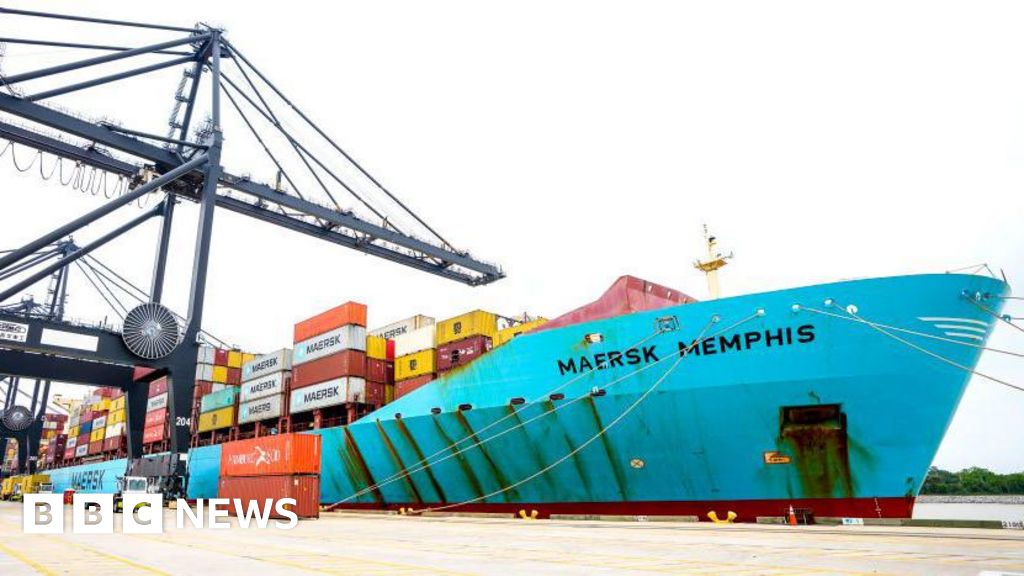 Getty Images
Getty ImagesA sharp drop in imports triggered by President Donald Trump’s tariff policy helped boost US economic growth between April and June, according to the latest figures.
The world’s largest economy expanded at an annual pace of 3% after shrinking in the first three months of the year, the Commerce Department said.
The bigger-than-expected rebound reflected swings in trade after businesses rushed to get goods into the US ahead of Trump’s taxes and is not necessarily an indication of the health of the wider economy.
Nevertheless, the US president used the data to take aim at Jerome Powell, chair of America’s central bank, ahead of a decision on interest rates later on Wednesday.
Using his “Mr Too Late” nickname for Federal Reserve chair Powell, Trump wrote on social media that the economic figure was “WAY BETTER THAN EXPECTED! ‘Too Late’ MUST NOW LOWER THE RATE. No Inflation! Let people buy, and refinance, their homes!”.
The US Fed typically lowers interest rates when the economy is struggling and raises them if inflation, which measures the pace of price growth, rises too quickly.
The bank has been hesitant to act one way or another this year, saying it wants to see how tariffs and other new policies, including tax cuts, will affect the economy.
Recent data showed that the rate of inflation eased to 2.1% in the three months to June, from 3.7% between January and March.
Some analysts said the rebound in economic growth between April and June was likely to bolster arguments that the bank can afford to wait.
Bernard Yaros, lead US economist at Oxford Economics, said: “The economy’s resilience will allow the Federal Reserve to hold still and assess the unfolding tariff impact on consumer prices before pivoting to interest rates cuts in December.”
Many of the details of the Wednesday’s report were consistent with an economy that is cooling but not in serious distress.
Consumer spending increased 1.4%, up from 0.5% between January and March but it represented much slower growth than last year.
Business investment eased and federal spending also dropped as areas outside of defence cut back.
A separate gauge that tracks consumer spending and investment slowed from 1.9% to 1.2%, the Commerce Department said.
Some economists have argued that this measure is a more helpful indicator, given the fluctuations in trade.
“Forget about the headline number,” Jim Thorne, chief market strategist for Wellington-Altus Private Wealth told the BBC’s Opening Bell. “The underlying data is suggesting an economy that is losing momentum.”
Though he added: “The good news is that price pressures are starting to alleviate.”


